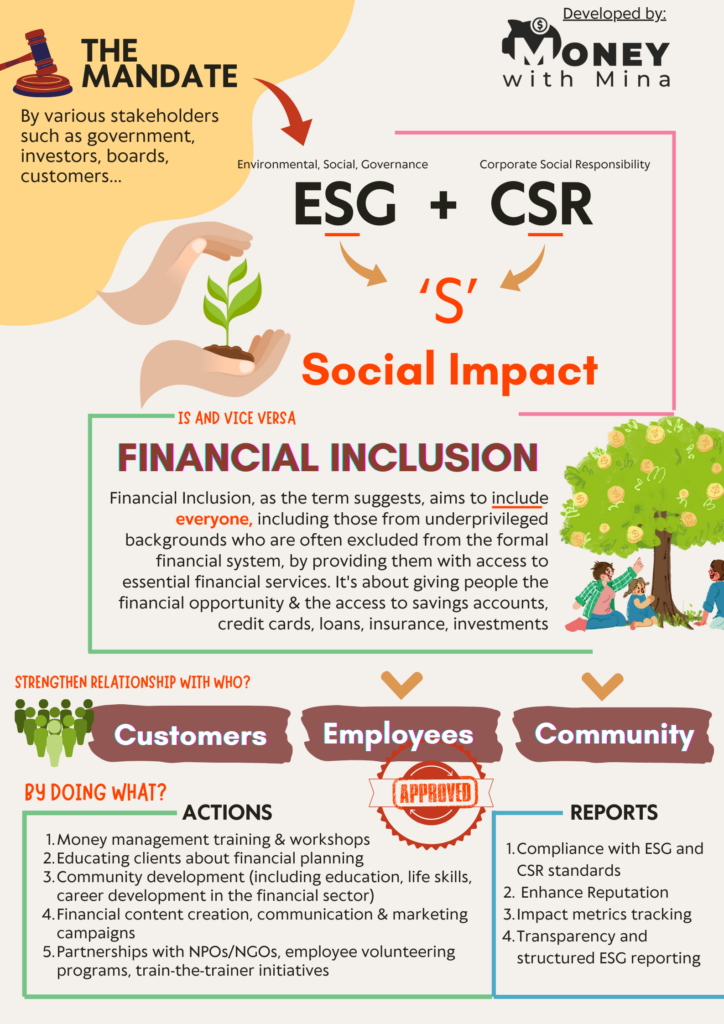𝐅𝐢𝐧𝐚𝐧𝐜𝐢𝐚𝐥 𝐈𝐧𝐜𝐥𝐮𝐬𝐢𝐨𝐧 is a critical initiative that aims to provide access to essential financial services for individuals across different economic backgrounds. It involves efforts to bring everyone, especially underprivileged individuals, into the formal financial system, granting them opportunities to utilize services such as savings accounts, credit cards, loans, insurance, and investments. In recent years, there has been an increasing emphasis on the role of Environmental, Social, and Governance (ESG) factors and Corporate Social Responsibility (CSR) in promoting 𝐟𝐢𝐧𝐚𝐧𝐜𝐢𝐚𝐥 𝐢𝐧𝐜𝐥𝐮𝐬𝐢𝐨𝐧.
If you are wondering how 𝐟𝐢𝐧𝐚𝐧𝐜𝐢𝐚𝐥 𝐢𝐧𝐜𝐥𝐮𝐬𝐢𝐨𝐧 is linked to 𝐄𝐒𝐆 and 𝐂𝐒𝐑 initiatives, this infographic highlights the interplay, emphasizing the significance of addressing social impacts while driving financial inclusion efforts in your companies. By integrating ESG principles and CSR practices into strategies for financial inclusion, organizations can create a more inclusive and sustainable financial ecosystem.
Financial entities, such as banks and financial institutions, must drive financial inclusion efforts. If not, then WHO will take the lead?
If non-financial entities, such as corporations, want to engage in financial inclusion efforts, it may involve initiatives related to employee engagement, diversity and inclusion efforts, such as taking care of employees’ financial well-being through financial literacy training.
Key Takeaways from the Infographic:
- Strengthening Relationships: By promoting financial inclusion, organizations can benefit on building strong relationships with clients, employees, the community they serve.
- Activities: The infographic outlines various actions that can drive financial inclusion initiatives, such as money management training, community development projects, and partnerships with non-profit organizations.
- Compliance and Reputation: By adhering to ESG and CSR standards, organizations can enhance their reputation and credibility in the realm of financial inclusion. Impact metrics tracking and structured reporting further demonstrate transparency and commitment to social responsibility.
- Collaborative Efforts: Engaging in collaborations with non-profits, implementing employee volunteering programs, and training initiatives play a critical role in amplifying the impact of financial inclusion efforts.
If your company aims to drive social impact, such as a Financial Inclusion project, our platform can assist you. Whether you are in marketing, HR, or community building roles, there are impactful ways we can collaborate together.


